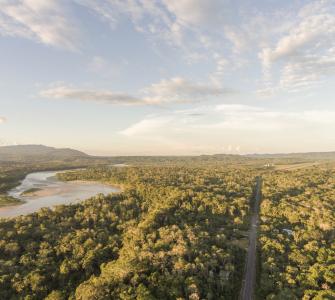Over the next few years, thousands of kilometers of roads will be built and/or improved in the Amazon. Investments in this infrastructure are driven by the increase in natural resource prices, population growth, and multiple initiatives to promote regional trade and energy transportation.
Many of the planned road projects are subject to heated debate in the region. On one hand, they are expected to contribute to regional development through increased employment, trade, and mobility opportunities. On the other hand, roads raise concerns about deforestation and forest degradation, which would generate losses in biodiversity, alter hydrological cycles and climate, and reduce the capacity of ecosystems to generate other benefits.
In collaboration with the Amazon Environmental Research Institute (Instituto de Pesquisa Ambiental da Amazônia, IPAM) and the Foundation for Conservation and Sustainable Development (Fundación para la Conservación y el Desarrollo Sostenible, FCDS), CSF has completed a project simultaneously analyzing the economic return, environmental risks, and social impacts of a set of 75 road sections in the Amazon in Bolivia, Brazil, Colombia, Ecuador, and Peru. These projects would cover a total distance exceeding 12,000 kilometers.
The analysis demonstrated that, although all roads would cause negative environmental impacts, avoiding the riskiest ones would prevent the five countries from incurring losses of more than US $7.6 billion, caused by poor planning processes and bad investments. Furthermore, more than 1 million hectares of deforestation could be avoided. By quantifying and comparing the social and environmental impacts of the projects with their economic return, we can avoid projects that simply do not make sense, as well as prioritize those that balance economic returns with the socio-environmental impacts.
Through ongoing engagement with decision-makers and stakeholders throughout this project, including presentations of our results, our ultimate goal is to move governments and investors towards better road planning that concurrently promotes (or at least carefully balances) economic growth, social concerns and the conservation of natural resources.
This project was made possible through the generous support of the Gordon and Betty Moore Foundation.
The article published in PNAS (in English) can be found here and the policy brief (in Spanish) is here. To watch the video of our findings in English, please cick here. For the video in Portuguese, click here. For Spanish, please click here.
Photo: Highway in the Ecuadorian Amazon
Photo Credit: Dr. Morley Read/ Shutterstock.com

